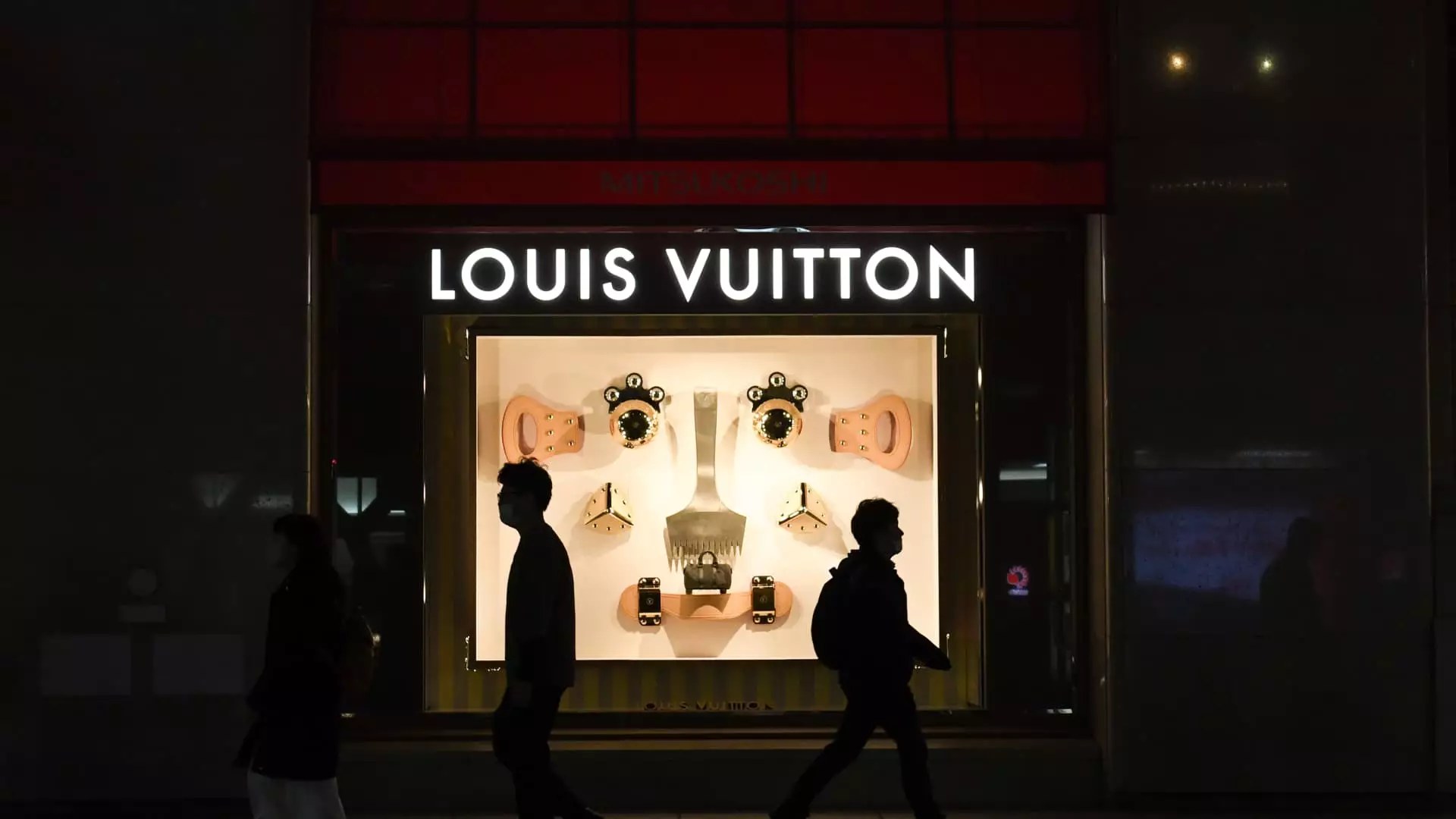The world of luxury is often seen through a lens of invincibility. Brands like LVMH (Moët Hennessy Louis Vuitton) have historically stood as titans, their very names summoning visions of affluence and exclusivity. However, the recent 8% slide in LVMH shares reveals a stark reality: even the giants can stumble. This sharp downturn, coupled with a year-on-year sales dip of 3% in the first quarter, has cost LVMH its title as the world’s preeminent luxury brand—at least temporarily, as Hermès moved to the forefront. This upheaval challenges the long-held perception that the luxury market is resilient against downturns.
Analysis of a Souring Market
Sales in LVMH’s wines and spirits segment, identified as the hardest-hit area, dropped an alarming 9%. This plummet cannot simply be chalked up to changing consumer tastes; geopolitical tensions and a shifting economic landscape play pivotal roles. With both the United States and China showing diminished demand for specific high-end products like cognac, the broader implications of political decisions are becoming crystal clear. High-end luxury sales are less about individual taste and more about macroeconomic factors. The luxury consumer, once seemingly immune to economic fluctuations, is now revealing vulnerabilities that brands must reckon with.
Regional Disparities: A Troubling Trend
Sales figures reflect a broader global trend. The luxury segment experienced varying regional sales performances: Europe remained buoyant, with a 2% organic growth, whereas Asia (excluding Japan) plummeted by 11%, and U.S. sales dipped 3%. Japan also reported a fractional decline of 1%. These figures highlight an unsettling trend: an erosion of demand in key markets, which begs the question: Is the luxury market genuinely safe from external economic pressures? Analysts warn that this inconsistent performance is a bellwether for a broader downturn, one that could reverberate throughout the luxury sector, destabilizing brands like LVMH that have long enjoyed an aura of solidarity.
The Analyst Consensus: No Silver Linings
Financial experts are ringing alarm bells, suggesting that recent sales figures are not merely an anomaly but indicative of larger systemic challenges facing the luxury sector. Analysts from Citi and Jefferies have adjusted their forecasts, stripping back optimistic projections in light of these results. The downgrading of stock prices signals a growing awareness of the vulnerabilities within the luxury ecosystem. Their observations aren’t merely speculative but grounded in the tumultuous economic climate shaped by unpredictable policy choices, such as tariffs introduced under the Trump administration. The luxury sector seems ill-equipped to navigate these headwinds, and the consequences could spawn long-term repercussions.
Consumer Sentiment: A Cautious Approach
Cecile Cabanis, LVMH’s Chief Financial Officer, echoed concerns regarding consumer sentiment, acknowledging that “aspirational clientele is always more vulnerable in less positive economic cycles.” This admission is both revealing and alarming. The luxury consumer, often portrayed as unwavering, is undeniably susceptible to socio-economic factors that influence spending capacity. In an age where unpredictability reigns, brands need to engage with their clientele on a deeper level, understanding not just their desires but their apprehensions stemming from economic uncertainties.
Repricing Strategies: Navigating Inflation Hazards
While Cabanis pointed to prospects of repricing goods to counteract inflation, this brings forth a critical dilemma. High-end brands, accustomed to the luxury market’s profit margins, now face the precarious choice of absorbing costs or potentially alienating their high-wage clientele. The traditional narrative that luxury brands can seamlessly pass on costs to consumers is under strain as well. Some clients may not respond positively to price hikes, leading to a potential dip in brand loyalty—a risk that threatens long-term brand equity.
The tale of LVMH serves as a microcosm for the luxury sector at large. The allure of high-end goods has been muddied by economic realities and shifting consumer behaviors, crystallizing an urgent need for brands to pivot their strategies thoughtfully. The struggle of this illustrious giant invites introspection for not just LVMH, but for all luxury players navigating these stormy waters. The vital question lingers: how long can the luxury dream endure before it must confront the waking world of fiscal reality?

